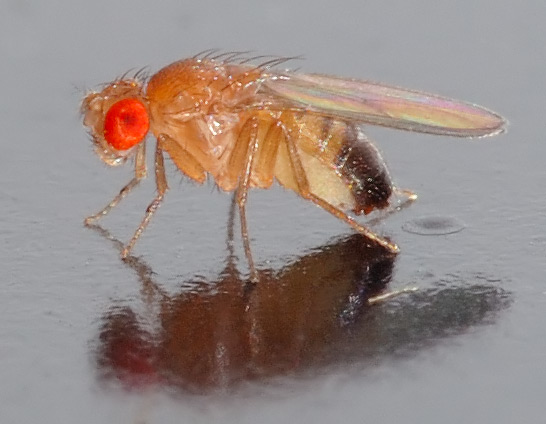Ion channels in the nervous system are among the most important targets for insecticides. Understanding the structure of the channels is key for the identification of novel species-specific binding sites of agrochemicals. Researchers at the Max Planck Institute of Molecular Physiology in Dortmund, Germany, joined forces with protein manufacturing company Cube Biotech and Bayer’s Crop Science division to reveal the structure and function of a potassium ion channel from fruit flies. Their newly obtained insights reveal the differences between human and insect channels, explain how known compounds affect the channel and propose new target sites for drugs. The research could help pesticide manufacturers design new drugs apt to specifically kill pest insects and parasites without affecting other animals like bees and mammals.
The Slowpoke potassium channels in Drosophila, the common fruit fly, are huge and complex proteins that sit inside the cellular membrane and selectively and rapidly transport vital potassium ions through it. They are found in all animals and are responsible for completing various tasks, most importantly in the brain and in muscle cells. The essential roles of the potassium channels signify the importance of targeting Slowpoke with newly developed insecticides in order to help overcome the global problem concerning the decrease in efficiency due to the growing pesticide resistance. Yet, there is always the risk of not aiming properly. “Ideally, you want insecticides to be really specific to the pest insect, avoiding drugs that are toxic for humans, or other animals, such as birds, rodents and beneficial insects like bees,” says Stefan Raunser, Director at the Max Planck Institute of Molecular Physiology in Dortmund, and lead author of the study.
In order to design drugs that are specific for pest insects, scientists need high-resolution structures of the ion channels. Raunser and colleagues used cryo-electron microscopy (cryo-EM) to obtain the structures of the protein in the open and in the closed states and compared them with structures of the human proteins that are already known. “The difference between human and insect channels are really tiny, but we found protein regions that are specific to insects,” says Raunser.
Detailed map of the potassium channel for drug discovery
One specific site of the channel, named RCK2 pocket, has amino acids that differ between Drosophila and humans. It is located at the gating ring at the bottom of the channel. The gating ring sits inside the cell, picks up calcium ions when abundant, and kicks off a cascade of rearrangements that open up the central cavity for potassium ions to pass through. The RCK2 pocket changes its shape as it shifts between closed and open states. Therefore, it is a potentially perfect target for small molecules to block the channel in either state. Scientists also pinpointed other less insect-specific drug target sites. Among them, the S6 pocket appears in the closed state and could be used to lock the channel. “We are providing pharmaceutical scientists with a detailed map of the potassium channel, which they can use to make better, highly selective insecticides,” concludes Raunser.
Additionally, the researchers also solved issues of the cryo-EM structures of the channel with two known compounds, verruculogen and emodepside. The fungal neurotoxin verruculogen is a small molecule that fits perfectly in the S6 pocket, close to the central cavity. Verruculogen keeps the channel narrow, locking it in the closed state. Another compound, emodepside, a drug used against gastrointestinal worms in cats and dogs, also binds close to the S6 pocket. Yet, it acts differently, as an additional passing filter, making it difficult for potassium to go through the channel in an optimal way. “It’s important to understand how these ligands can manipulate the channel,” says Raunser.
More information:
Tobias Raisch et al, Small molecule modulation of the Drosophila Slo channel elucidated by cryo-EM, Nature Communications (2021). DOI: 10.1038/s41467-021-27435-w
Provided by
Max Planck Society
Citation:
Finding new potassium channels to selectively target pest insects (2021, December 14)



